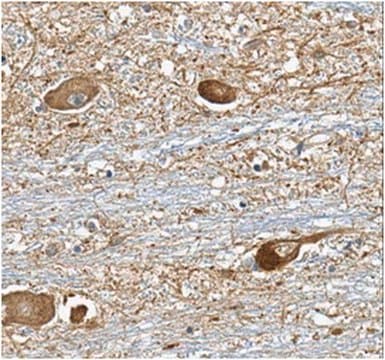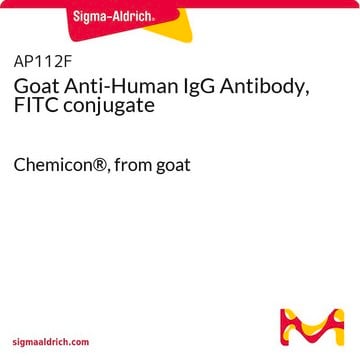F4890
Monoclonal Anti-Rabbit Immunoglobulins–FITC antibody produced in mouse
clone RG-16, purified immunoglobulin, buffered aqueous solution
Sinónimos:
Monoclonal Anti-Rabbit Immunoglobulins (IgG, IgA, IgM)
About This Item
Productos recomendados
biological source
mouse
conjugate
FITC conjugate
antibody form
purified immunoglobulin
antibody product type
secondary antibodies
clone
RG-16, monoclonal
form
buffered aqueous solution
should not react with
pig, chicken, bovine, horse, human, guinea pig, turkey, rat, canine, goat, feline, sheep
storage condition
protect from light
technique(s)
immunohistochemistry (formalin-fixed, paraffin-embedded sections): 1:20
indirect immunofluorescence: 1:50 using using chicken fibroblast cells and primary antibody produced in rabbit
isotype
IgG1
shipped in
dry ice
storage temp.
−20°C
target post-translational modification
unmodified
¿Está buscando productos similares? Visita Guía de comparación de productos
General description
Specificity
Application
- immunocytochemistry
- immunohistochemistry
- immunofluorescence
Physical form
Disclaimer
Not finding the right product?
Try our Herramienta de selección de productos.
Storage Class
10 - Combustible liquids
wgk_germany
nwg
flash_point_f
Not applicable
flash_point_c
Not applicable
ppe
Eyeshields, Gloves, multi-purpose combination respirator cartridge (US)
Certificados de análisis (COA)
Busque Certificados de análisis (COA) introduciendo el número de lote del producto. Los números de lote se encuentran en la etiqueta del producto después de las palabras «Lot» o «Batch»
¿Ya tiene este producto?
Encuentre la documentación para los productos que ha comprado recientemente en la Biblioteca de documentos.
Nuestro equipo de científicos tiene experiencia en todas las áreas de investigación: Ciencias de la vida, Ciencia de los materiales, Síntesis química, Cromatografía, Analítica y muchas otras.
Póngase en contacto con el Servicio técnico








